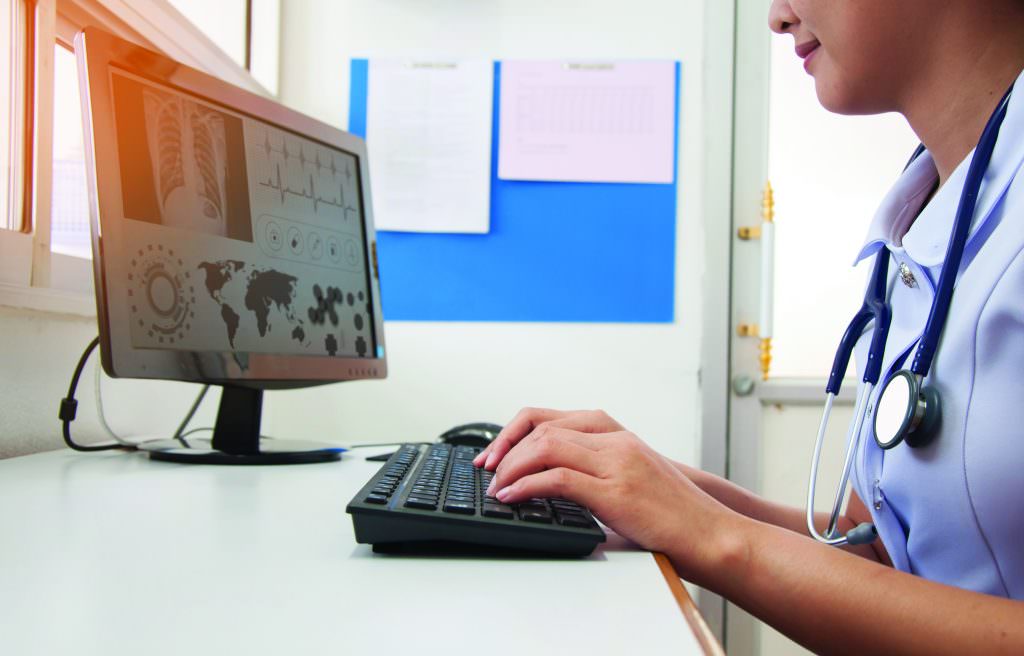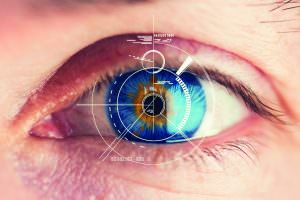An Eye for Fraud

Iris recognition technology offers one of the most effective ways to prevent medical identity theft and false claims

Jeff Kohler, Princeton Identity
In 2013, according to the FBI, insurance fraud totaled $80 billion. These costs are borne by insurers, but the companies typically pass them on to providers, who, in turn, may pass them on to patients. At the same time, providers are looking for better ways to protect their patients’ medical identities, especially after an IBM report indicated that one out of three Americans had their health care data stolen or hacked in 2015.
While many payers and investigators have adopted new technologies to identify issues after claim submission, fraud is best prevented at the provider’s office – before it can occur, as opposed to using “pay-and-chase” methods.
Biometric characteristics can be a powerful tool to protect patients, providers and payers from fraud. Among biometric technologies, iris recognition is one of the most convenient, accurate, reliable and hygienic identifiers.
Payers are increasingly using methods such as big data analytics that identify irregularities to combat medical identity theft, phantom billing, and other forms of insurance fraud. However, this analytics are typically applied after a claim is paid. In the case of billing for services not rendered because a patient is not physically present, analytics cannot capture this type of fraud, since a claim can be coded by a fraudulent provider in a way that does not stand out as irregular. The largest provider clearinghouse in the United States, Change Healthcare, which processes more than 6 billion claims a year, estimates that phantom billing – billing for services not rendered – accounts for nearly 40 percent of all medical fraud.
Fraud is best prevented at the provider’s office – before it can occur, as opposed to using “pay-and-chase” methods.
The best approach for protecting against fraudulent payments is to prevent them from occurring by adding a biometric identifier when patients sign in to a medical facility. Traditionally, when patients enter a provider’s office, they sign in using only biographic information (“things you know”) or ID cards (“things you have”). However, these can easily be stolen or lost. Accurate identification is best achieved by augmenting the biographic information with biometric characteristics (“things you are”). Adding a biometric layer protects patients from medical identity theft, protects providers from mistaken entries in the wrong electronic medical record, and protects payers from phantom billing.
Phantom billing – billing for services not rendered – accounts for nearly 40 percent of all medical fraud.

Over the past several years, biometric usage has been expanding in both enterprise and commercial markets. Vertical markets including border control, airports, data centers, banking, and healthcare are adding biometrics to increase security in applications for access control, time and attendance, and surveillance. At the same time, the convenience factor of biometrics continues to increase as more mobile phones add one or more modalities. Acuity Market Intelligence projects that 100 percent of the mobile market will include biometrics by the next decade. This combination of security and convenience greatly enhances the effectiveness of fraud prevention efforts.
 While biometrics offer substantial increases in accuracy over traditional identification methods, there are multiple modalities to consider. Several characteristics, including fingerprint, voice and facial recognition, can change either naturally as an individual age or as the result of external factors. To compensate for these potential alterations, patients must be re-enrolled in the system periodically to ensure the most current biometric information is available to provide the most accurate identification possible. This inconvenience can negatively affect both staff productivity and a provider’s ability to ensure proper patient identification. Additionally, some biometrics, primarily fingerprint and hand recognition, require patients to make physical contact with a surface. This poses a potential hygiene issue, which can lead to disastrous results in a healthcare setting. Lastly, the potential of a false acceptance or false rejection varies by biometric type.
While biometrics offer substantial increases in accuracy over traditional identification methods, there are multiple modalities to consider. Several characteristics, including fingerprint, voice and facial recognition, can change either naturally as an individual age or as the result of external factors. To compensate for these potential alterations, patients must be re-enrolled in the system periodically to ensure the most current biometric information is available to provide the most accurate identification possible. This inconvenience can negatively affect both staff productivity and a provider’s ability to ensure proper patient identification. Additionally, some biometrics, primarily fingerprint and hand recognition, require patients to make physical contact with a surface. This poses a potential hygiene issue, which can lead to disastrous results in a healthcare setting. Lastly, the potential of a false acceptance or false rejection varies by biometric type.
Of the many biometric characteristics, iris recognition offers one of the most accurate, reliable and hygienic identification methods.
Iris patterns are the least likely to change, and recognition can be accomplished quickly and easily without requiring patients to make physical contact with a potentially unsanitary surface. Additionally, computing platforms and new mobile technologies deliver the convenience of performing iris recognition on devices that providers are already using comfortably. Enrolling and verifying patients can be accomplished with a simple click of an iris camera incorporated into or connected to a tablet.
With a mobile biometric solution, a patient’s iris pattern becomes the unique key that unlocks access to his or her electronic medical record, guaranteeing that the correct record is opened every time. This also eliminates the possibility of an individual posing as another to take advantage of insurance benefits and protects patients from unknowingly becoming victims of medical identity theft. Ultimately, this streamlines the population management process and eliminates the potential for human error, especially for patients with the same name. This can shorten wait times and office visits, making patients less apprehensive about seeing a provider.

All of these factors combine to deliver a powerful, accurate, convenient and reliable means of reducing the insurance and medical identity fraud that costs providers, payers and patients dearly each year. Real-time data is essential to combatting fraud, and iris recognition can provide insurance payers with instant confirmation of a patient’s identity, as well as time and location information. The technology allows healthcare providers and payers to provide enhanced patient care while mitigating fraud with a single device.
Jeff Kohler (jeff.kohler@princetonidentity.com) is senior director for product and business development at Princeton Identity (www.princetonidentity.com).
